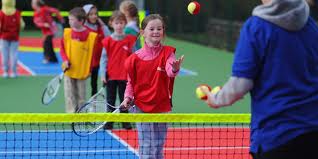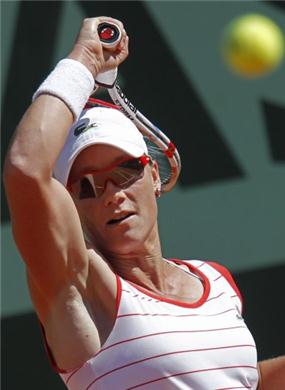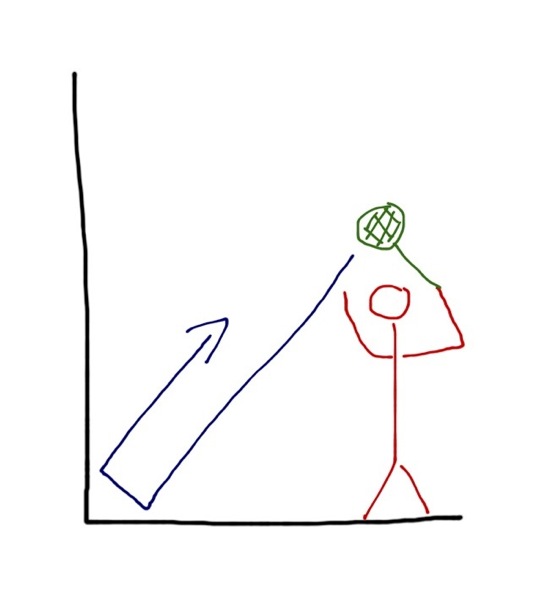Backboard Decathlon: Supplement to ROG initiative
 Monday, October 22, 2012 at 12:33PM
Monday, October 22, 2012 at 12:33PM  CAtennis
CAtennis  As a lot of you may already know, the USTA has instituted new rules for 10 and Under tennis competition. The R(ed) O(range) G(green) ("ROG") initiative is intended to make tennis more kid-friendly and assist with the long-term development process. You can read more about the new rules here. In the alternative, we recommend that you access the relevant information on the USTA's own website or check out websites such as Parentingaces.com which routinely discuss the changes in rules and their effects.
As a lot of you may already know, the USTA has instituted new rules for 10 and Under tennis competition. The R(ed) O(range) G(green) ("ROG") initiative is intended to make tennis more kid-friendly and assist with the long-term development process. You can read more about the new rules here. In the alternative, we recommend that you access the relevant information on the USTA's own website or check out websites such as Parentingaces.com which routinely discuss the changes in rules and their effects.
Although CAtennis.com takes no position regarding the ROG initiative, we believe that the underlying philosophy is sound: kids + repetition = more, better players -> more Grand Slam contenders. In this regard, we believe that it would be appropriate for U10 tournament organizer to consider expanding their horizons a bit and going beyond the four corners of the tennis court to not only get kids hooked on the sport but also hooked on the process of mastering the game.
 Here is what we have in mind: supplementing every U10 tennis event with a backboard "decathlon". A lot of tennis clubs have backboards within their facilities. Some of these backboards are purely for tennis players while others are in the form of racquetball or handball courts. Many of these backboards are underused - particularly by tennis players - for months at a time. Yet, they are one of the best and cheapest training tools available. Many great champions - from Bjorn Borg to Pete Sampras - honed their strokes by practicing against backboards, walls or garage doors. Why is backboard training so effective? In one word: myelination. Briefly, myelin assists humans in our learning process. When people learn a new skill, myelin levels increase between the relevant neuron connection. This, in turn, allows signals to travel faster between the areas of the brain involved in the activity. So, for example, when you're first starting out with tennis you can find yourself a bit overwhelmed by all the concepts: 1. footwork; 2. grip; 3. preparation; 4. swing; 5. follow-through; etc. However, with practice, these movements become more and more ingrained (or "grooved"). The gross and fine motor skills associated with the stroke (as well as related muscles) become sharpened. Accordingly, some of the concepts may be internalized or become wholly unconscious. Your brain simply understands the various adjustments that have to be made with respect to each particular shot.
Here is what we have in mind: supplementing every U10 tennis event with a backboard "decathlon". A lot of tennis clubs have backboards within their facilities. Some of these backboards are purely for tennis players while others are in the form of racquetball or handball courts. Many of these backboards are underused - particularly by tennis players - for months at a time. Yet, they are one of the best and cheapest training tools available. Many great champions - from Bjorn Borg to Pete Sampras - honed their strokes by practicing against backboards, walls or garage doors. Why is backboard training so effective? In one word: myelination. Briefly, myelin assists humans in our learning process. When people learn a new skill, myelin levels increase between the relevant neuron connection. This, in turn, allows signals to travel faster between the areas of the brain involved in the activity. So, for example, when you're first starting out with tennis you can find yourself a bit overwhelmed by all the concepts: 1. footwork; 2. grip; 3. preparation; 4. swing; 5. follow-through; etc. However, with practice, these movements become more and more ingrained (or "grooved"). The gross and fine motor skills associated with the stroke (as well as related muscles) become sharpened. Accordingly, some of the concepts may be internalized or become wholly unconscious. Your brain simply understands the various adjustments that have to be made with respect to each particular shot.
This unconcious (or partially conscious) understanding allows the player to think about other things besides the the stroke itself such as where to hit the ball (and, perhaps, the following shot). In other words, a player who has achieved this level seems to have "more time" to hit the ball than a beginner. Of course, an expert and a beginner may have the same amount of time at their disposal although the beginner's brain is muddled with more basic concepts than an expert's brain ("paralysis by analysis"). Thus, the beginner's brain has to fit more computations - speed, trajectory, spin, etc. - in the same finite amount of time - which often results in a mistake. An expert doesn't need to think about the basic concepts as much because, for him, these concepts have been automated. Accordingly, the expert can marshall her brain's assets towards other tasks (e.g., strategy).
Now, the foregoing is a round-about way of saying that repetition is good. The more kids repeat strokes, the more automatic the strokes become. The sooner kids master technique the earlier they can move on to the next level. The benefit of using the backboard in the development process is that the player has the opportunity to hit thousands of balls within 1 or 2 hours v. hundreds (lessons, clinic or match). It's not uncommon to see kids participating in clinics where they are simply standing around and not hitting any balls at all.
The wall doesn't miss, doesn't mishit and doesn't generate pace. Kids learn very early which strokes are good for getting the ball to go forward and which strokes send the balls all over the place. In addition, kids can push themselves to focus on keeping the rally going for longer and longer thereby improving their attention span (which is beneficial in tennis as well as in life). Furthermore, backboard practice is great for developing one's imagination; players can pretend that they are playing against their heros on TV. Isn't that what "playing" is all about?! So wouldn't it be productive if every U10 tournament included a backboard component?! Kids could not only play against each other in a tennis format but could also compete against each other in a more "artificial" setting (although one that's likely to pay more long-term dividends). For example, each tournament could have a main draw, a back draw and a backboard draw. Prizes could be awarded for each category and, knowing this, kids would be more inclned to practice against the backboard (making them better players and more mentally tough competitors). Several back-board games could be incorporated in a "Backboard Decathlon" where boys and girls could compete against each other. Here are some suggestions:
1. Most consecutive groundstrokes without a mistake. To count, the ball must bounce behind a 12' line (for younger kids) or 18' line (older kids). The depth rule ensures that the kids hit proper, penetrating shots.
2. Most groundstrokes in a 5 minute period (same depth dimensions as above). Maximum of 3 mistakes allowed. This game is great for having the kids' shots are not only strong but also fast.
3. Most volleys without a mistake. Kids can stay 4' (younger kids) or 6' (older kids) from backboard to ensure that they are "sticking" / punching the shot with power and precision.
4. Point construction. Tournamen director dictates a point (e.g, serve, forehand, backhand topsin, backhand slice, forehand approach, forehand volley, backhand volley, overhead, etc.) that the competitors have to follow. The ones who do not follow it, are knocked out; the ones who follow the point move on to the next round (where a different, more complex point is constructed).
5. Target practice. Targets are put on the wall and the players are given 5 minutes to hit the maximum number of targets with their groundstrokes. Maximum of 3 mistakes allowed.
6. Knock-out. Groups of 4-5 kids are playing a point (hit and get out of the way). The player who misses or doesn't get to the ball is knocked out and the other kids continue on until only one player is remaining. We can attest that this game is a lot of fun.
7. Most overheads in a 5 minute interval.
8. Singles. Players compete against each other in a racquet ball-type format in a game up to 11.
9. Doubles. Same as #8 above except that 2 teams consisting of 2 players each compete against each other. Players on each team must aternate shots.
10. Most side-to-side volleys in a 3 minute period (i.e., "The Cara Black" drill)
We urge all junior tournament directors to inject some additional fun in their events and let us know how it works. If you are truly interested in growing the game, thinking outside the box is imperative. By incorporating a backboard component in your tournament you will be on the front lines of development. Your players will develop better strokes, better focus, better hand to eye coordination, more stamina, a better work ethic, greater imagination by competing against their imaginary heros ("All men who have achieved great things have been great dreamers" - O. S. Marden) as well as a better understanding of court geometry. Furthermore, they will associate not only tournaments but also practices (specifically on their own) with a fun experience.




